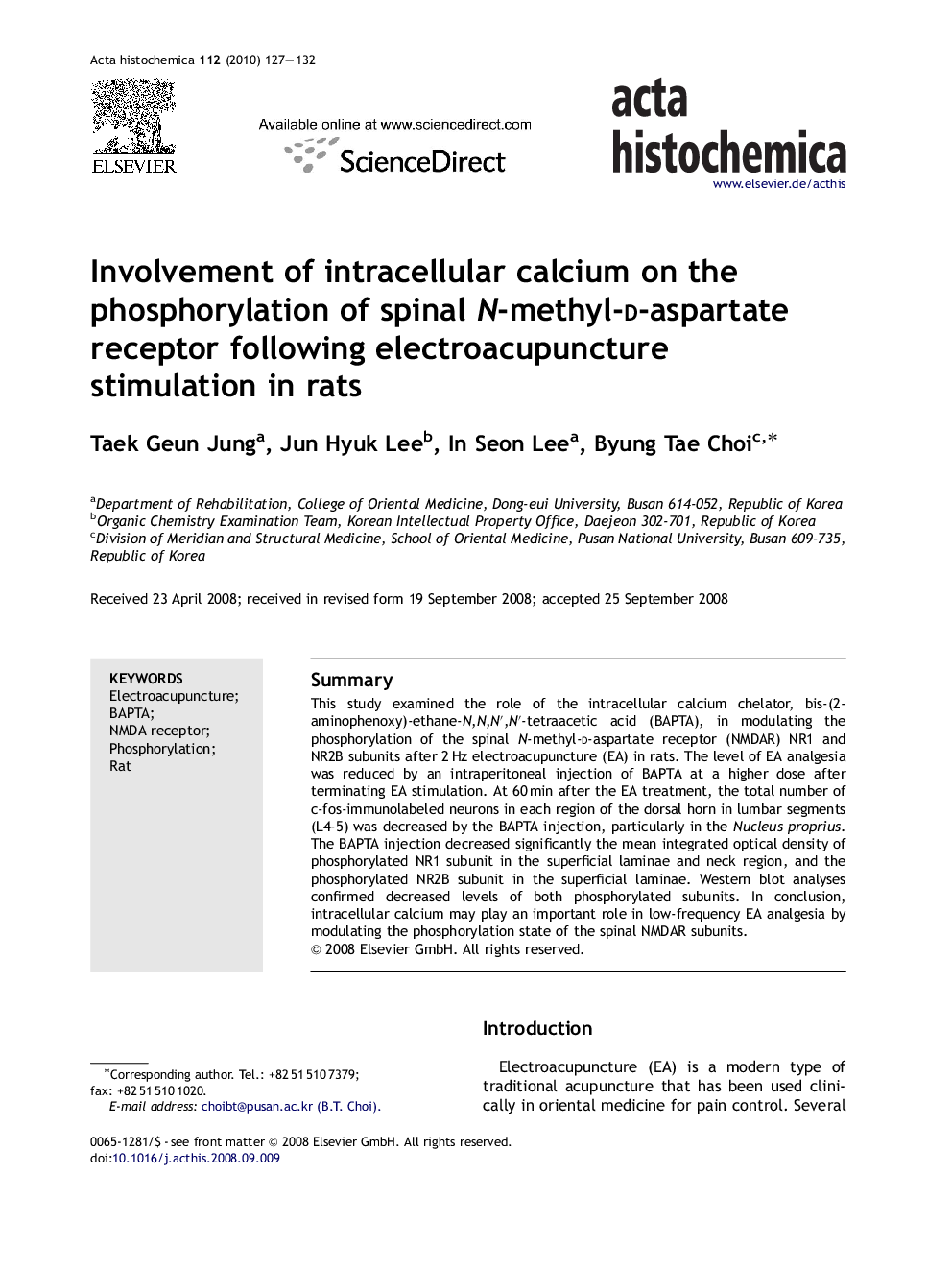| Article ID | Journal | Published Year | Pages | File Type |
|---|---|---|---|---|
| 1923994 | Acta Histochemica | 2010 | 6 Pages |
Abstract
This study examined the role of the intracellular calcium chelator, bis-(2-aminophenoxy)-ethane-N,N,Nâ²,Nâ²-tetraacetic acid (BAPTA), in modulating the phosphorylation of the spinal N-methyl-d-aspartate receptor (NMDAR) NR1 and NR2B subunits after 2Â Hz electroacupuncture (EA) in rats. The level of EA analgesia was reduced by an intraperitoneal injection of BAPTA at a higher dose after terminating EA stimulation. At 60Â min after the EA treatment, the total number of c-fos-immunolabeled neurons in each region of the dorsal horn in lumbar segments (L4-5) was decreased by the BAPTA injection, particularly in the Nucleus proprius. The BAPTA injection decreased significantly the mean integrated optical density of phosphorylated NR1 subunit in the superficial laminae and neck region, and the phosphorylated NR2B subunit in the superficial laminae. Western blot analyses confirmed decreased levels of both phosphorylated subunits. In conclusion, intracellular calcium may play an important role in low-frequency EA analgesia by modulating the phosphorylation state of the spinal NMDAR subunits.
Related Topics
Life Sciences
Biochemistry, Genetics and Molecular Biology
Biochemistry
Authors
Taek Geun Jung, Jun Hyuk Lee, In Seon Lee, Byung Tae Choi,
